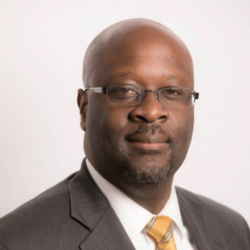For the second time in recent months, insurance giant UnitedHealthcare is mired in a contract squabble with a large Georgia health care system. And as before, the battle to hammer out an agreement that both sides can accept is coming down to the wire.
About 80,000 of the insurer’s members would face being out of network – and paying higher costs for medical care – if a contract agreement isn’t reached with the 11-hospital Wellstar Health System by Sunday.

Like many contract disputes, it’s primarily about payments for medical services.
United says Wellstar’s demands for double-digit price hikes are “egregious’’ and are not affordable for consumers and employers. The Marietta-based nonprofit hospital system counters that it simply wants United to pay at the same rate as other insurers.
“United has a track record of playing hardball with health systems,’’ Barbara Corey, a Wellstar executive, said Tuesday.
The Minnesota-based insurer averted a major contract termination in August by reaching a new deal with the Northside Hospital system. That agreement, in addition to preserving United’s main arrangement with the Atlanta-based health system, also brought Northside’s facilities in Gwinnett County back into United’s network after several months’ absence.
The Wellstar-United battle comes at a tricky time. Open enrollment season is about to begin, a time when many workers with employer-based health coverage pick their plans for the coming year. Wellstar’s absence would represent a big hole in the insurer’s network if a deal isn’t done.
To the brink . . . and maybe beyond
The vast majority of contract disputes between hospital systems and insurers have been resolved before the deadline, often just before the end of the old contract. But an increasing number of contracts appear to be lapsing, with hospitals and doctors dropping out of an insurer’s network.
“Insurers are trying to ratchet down the rates,’’ said Dave Smith of consulting firm Kearny Street Management. “Insurers are seeing pent-up [medical] demand and are crying the blues.’’

Meanwhile, Smith said, hospitals are coming off the double whammy of Covid surges and staffing shortages.
“Costs are rising tremendously,’’ he said, and hospitals are struggling to recover the money they lost during the pandemic.
Junior Harewood, CEO of UnitedHealthcare of Georgia, said the Wellstar request for a 16 percent rate hike, translating to $56 million, “is purely a money play.’’ The health system seeks a 40 percent increase over three years for all of its hospitals, United added.

Such an increase “has a significant impact on employers’ costs,’’ Harewood said. “That translates to higher costs for the members.’’
It’s highly unusual to have two major contract disputes back to back in a single market, he said. “We’ve never experienced anything like that.’’
Wellstar is the most expensive hospital system in the Atlanta area, Harewood said.
Corey noted that United said the same thing about Northside during that contract battle.
“We’ve been underpaid by United for years,’’ she said. The current contract, she added, “is extremely outdated.’’
Corey said the pandemic has increased cost pressures for Wellstar, including the need to recruit and retain nurses and other clinical staff. “Supply costs have really skyrocketed,’’ she added.
Negotiations are ongoing as the deadline looms Sunday. Wellstar said it’s “working hard on behalf of patients to reach an agreement with UnitedHealthcare.’’
There’s a significant exception to a contract breach for some United members.
The company said retirees in the State Health Benefit Plan who are members of its Medicare Advantage plan will continue to be able to receive care from Wellstar’s hospitals and physicians at the same cost share at network rates, even if the contract ends without a new agreement.
Overall, United said, “Our goal remains the same – to reach an agreement that ensures our members have continued access to Wellstar’s hospitals and employed physicians but at an affordable cost.’’

